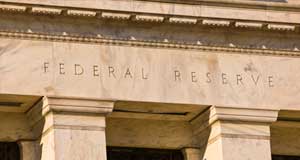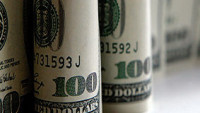 It’s scarcely believable, that at a time when the US economy shows a contraction of 4.8% in Q1 with the prospect of an even bigger contraction in Q2 that equity markets in Europe and the US, saw some of their biggest gains this month, after reports emerged from the US that data from a drug trial of Gilead Sciences remdesivir showed “quite good news” in the treatment of Covid-19 patients.
It’s scarcely believable, that at a time when the US economy shows a contraction of 4.8% in Q1 with the prospect of an even bigger contraction in Q2 that equity markets in Europe and the US, saw some of their biggest gains this month, after reports emerged from the US that data from a drug trial of Gilead Sciences remdesivir showed “quite good news” in the treatment of Covid-19 patients.
This news simply acted as an even stronger tail wind for stocks as markets looked beyond the data for the promised land of an economy coming out of lockdown, and slowly restarting against a backdrop of a treatment for Covid-19, quickly followed by a vaccine. Let us hope that this rose-tinted view of the rest of the year doesn’t collide with the hard reality of an earnings wipe-out, as consumer spending struggles to recover against a backdrop of caution and high unemployment.
Markets in Asia have taken their cues from yesterday’s strong gains Europe, and as a result we look set for another strongly positive open, with European stocks set to post their first positive month this year, while the S&P500 looks set to post its best monthly performance since the 1970’s. The latest Chinese PMIs also pointed to the continued stabilisation of the economy there as they both posted readings the north side of 50.
Last night’s Federal Reserve rate meeting showed that US officials were taking the crisis seriously in their assessment of the US economy, saying that it posed considerable risks to the economic outlook over the medium term. Their outlook was even more downbeat than their assessment in March, and gives confidence to the belief that the bias for further easing remains very much towards the downside. Fed chair Jay Powell gave the impression of a man determined to dig in for the long haul, in terms of doing whatever is necessary to support the economy, using the full range of tools at its disposal.
Yesterday’s Q1 GDP number was notable for the fact that there was a 7.6% drop in personal consumption, a huge drop when you consider that it only accounts for the period to the end of March, two weeks after the lockdown began. If you then assume that much of the missing data is likely to come from the period towards the end of the quarter then this number could well be revised even lower, and that’s even before you start to consider the economic damage which is likely to occur in Q2, as the lockdown continues into April and May.
Having seen how badly the US economy has been hit by recent events, today’s EU Q1 GDP numbers are expected to be equally as bad.
Before we get to that we will also get to see how badly the French economy has been hit by the coronavirus outbreak with expectations of a 4% GDP contraction, while consumer spending in March is expected to plunge by a record 5.8%.
While we’re getting a pretty clear idea of how much damage the crisis has done during the last few days of March, we haven’t as yet seen much data from the month of April.
Today’s German unemployment data are likely to give us a decent “heads up” so to speak, though some of the estimates appear rather conservative. It is being estimated that April unemployment will only edge up to 5.2% from 5% with 74.5k new unemployment claims. This seems rather low.
EU Q1 GDP is expected to contract 3.8%, while the collapse in energy prices is expected to see headline CPI collapse from 0.7% to 0.1%, while core prices are expected to fall from 1% to 0.7%.
Under any other circumstances a sharp fall in headline CPI would have central bankers reaching for the Mogadon, however with unemployment and non-performing loans set to soar, a little bit of deflation is the least of the ECB’s problems.
Today’s meeting of the ECB governing council is not expected to yield much in the way of policy action, with most of the heavy lifting expected to be done by jawboning. There has been some speculation of a further cut in rates, however given the damage already done by negative rates, this would be akin to compounding a policy mistake with another one.
President Lagarde is expected to impress upon the markets that the ECB is prepared to boost the amount of its €750bn Pandemic asset purchase program if required, though with another German court ruling due next month, the ECB probably won’t want to make too many waves quite yet in terms of limit and scope.
It would also not be unexpected if the additional LTRO operations announced in March were extended beyond their original maturity dates of June 24th this year.
Having seen off yesterday’s poor US GDP numbers we can expect to see the conveyor belt of appalling awful economic data continue today with the latest personal spending data for March expected to show a 5% drop, and another record fall.
Weekly jobless claims are expected to add another 3.5m to the unemployment roster on top of the 26m already announced in the last 5 weeks.
EURUSD – the 1.0900 area remains a key barrier on the upside. A move through 1.0900 could well see a test of the high two weeks ago just below 1.1000. On the downside we have support at the recent lows at 1.0720. Bias still remains to the downside while below 1.1000.
GBPUSD – the 1.2500 area continues to act as a barrier, with broader resistance at the 200-day MA above that at 1.2620. Support remains down near last week’s low at the 1.2270 area.
EURGBP – currently ranging above the lows at 0.8680 with resistance up near the 0.8780 area. A break below 0.8680 targets the 0.8620 area. A move above the 0.8780 area targets the highs last week at 0.8870.
USDJPY – while below the 107.30 area, we could well see further falls towards the 105.00 area. We have support at the 106.20 area.
_______
Other Forex Forecasts













